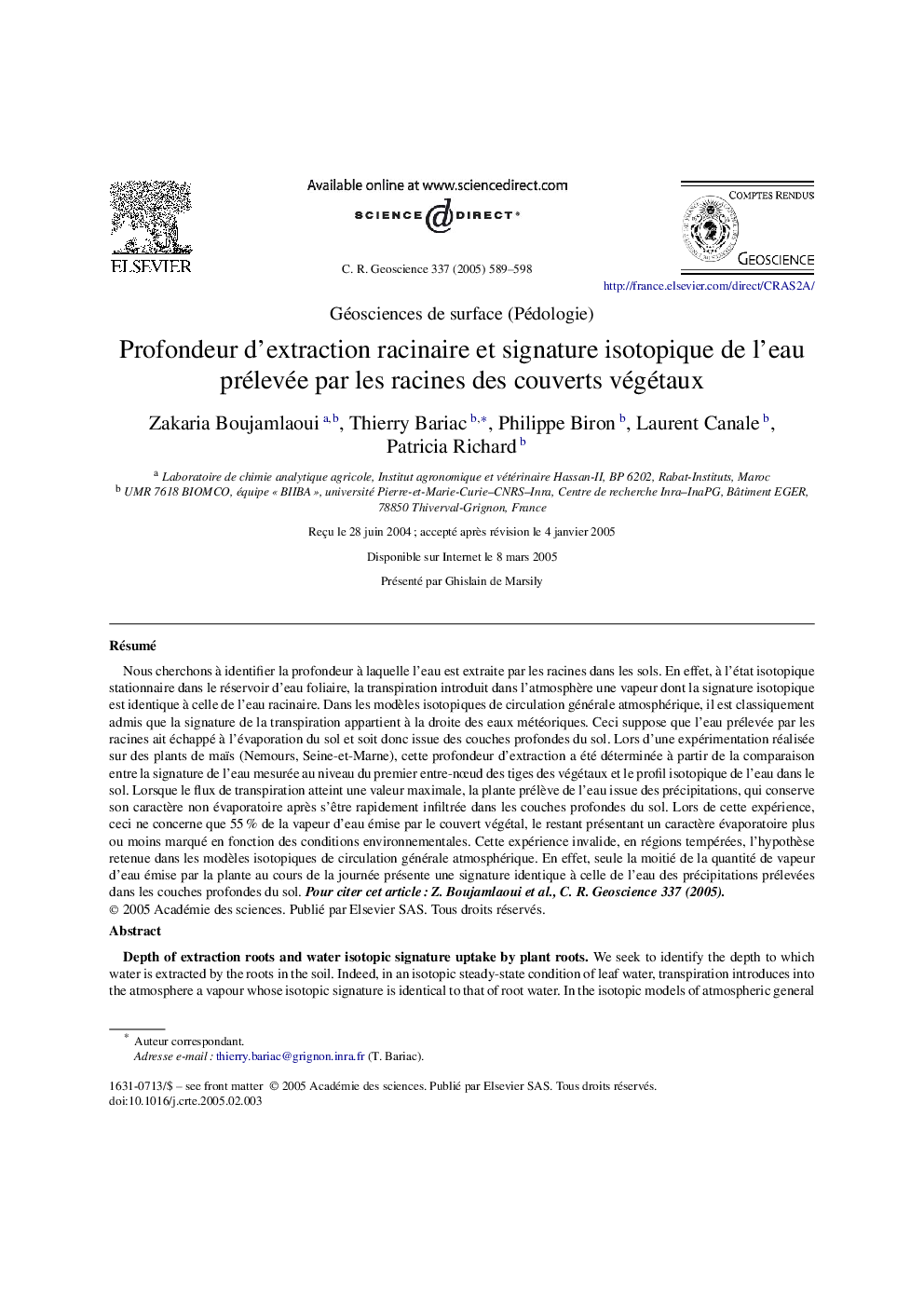| Article ID | Journal | Published Year | Pages | File Type |
|---|---|---|---|---|
| 9461878 | Comptes Rendus Geoscience | 2005 | 10 Pages |
Abstract
We seek to identify the depth to which water is extracted by the roots in the soil. Indeed, in an isotopic steady-state condition of leaf water, transpiration introduces into the atmosphere a vapour whose isotopic signature is identical to that of root water. In the isotopic models of atmospheric general circulation, it is classically allowed that the signature of transpiration belongs to the meteoric water line. This supposes that the water taken by the roots has escaped with the evaporation of the soil and comes thus from the deep layers of the soil. At the time of experimentation carried out on maize plants (Nemours, Seine-et-Marne, France), this extraction depth was inferred from the comparison between the signature of the water measured on the level of the first internode of the stems of the plants and the isotopic profile of water in the soil. When the flow of transpiration reaches a maximum value, the plant uptakes water resulting from precipitations and which preserves its non-evaporating character after having quickly infiltrated in the deep layers of the soil. This relates to only 55% of the flux transpired by the canopy, the remainder presenting an evaporating character more or less marked according to ambient conditions. This experiment invalidates the classical hypothesis used in isotopic models of general atmospheric circulation in temperate regions. In fact, only half the amount of water vapour transpired by the canopy during the day presents a signature similar to that of the rainwater sampled in deep soil layers. To cite this article: Z. Boujamlaoui et al., C. R. Geoscience 337 (2005).
Related Topics
Physical Sciences and Engineering
Earth and Planetary Sciences
Earth and Planetary Sciences (General)
Authors
Zakaria Boujamlaoui, Thierry Bariac, Philippe Biron, Laurent Canale, Patricia Richard,
